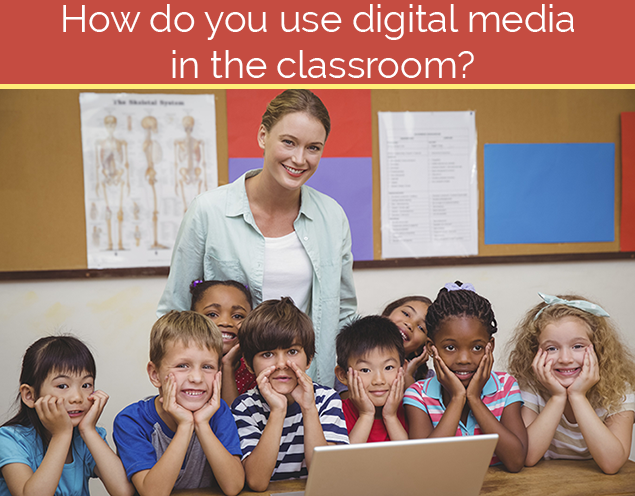How Can Teachers Use Digital Media To Improve Teaching And Learning?
Posted by Network Support · Leave a Comment
Customize learning materials and methods to each individual using digital media
Reaching all learners is challenging, particularly in a classroom where print-based materials, pencil and paper, and traditional teaching methods predominate. These inflexible materials and rigid methods assume that all students will work towards goals in the same way, using the same media and materials, and reaching the same performance criteria. Research says, the human brain processes visuals 400,000 times faster than text and the use of visual aids has been found to improve learning by up to 400 percent.
The biggest benefit in teaching and learning is that digital media improves that which we are able to know and do. So, do we make up multiple presentations of the same content – using text for some, speech for others, and images for still others? This just isn’t very feasible. Collecting and maintaining a sufficiently varied assortment of media that would allow us to create an optimal instructional environment for every student in every unit of curriculum would be incredibly costly, consume too much space, create grand logistical problems and quite frankly, drive teachers insane. Furthermore, this is not realistic. Teachers don’t need more tools; what we need are better tools!
Transformable
Unlike the conventional pedagogical mainstays (speech, printed text, and printed images) digital materials have an inherent flexibility. They can be modified in a host of ways, depending on the needs of the student. This flexibility makes it feasible to customize learning materials and methods to each individual.
Digital media allow the same content to be displayed in multiple ways. A user accessing a web page can adjust how content is presented by changing the appearance of text or images, by adjusting the volume and by eliminating graphics. In fact, many websites today make it all the more easier for users to adapt and personalize the appearance and the content of a website. In education we can do this as well.
By making adjustments within the media, we can change the way something is presented without converting it to another medium. For example, a loud or a soft sound is still a sound; large or small text is still text. A student who has trouble seeing small text may be able to better view an increased size. A student who has trouble understanding speech might slow down the audio or increase its volume.
Transforming digital media also enables us to shift across media from one medium to another. For example, using a text-to-speech editor, a teacher can set-up a computer to read words aloud and with speech recognition software, a language learner can speak into a microphone and see their words as text.
Tag. Your IT.
Tagging, also known interchangeably as marking, directs how information is displayed (bold, underline, italics, brown, etc.)
Envision a textbook marked with a highlighter pen. The difference between marking with a pen and using the digital media “highlighter,” is that with digital media, markups can be shown, hidden, altered, expanded or deleted. Furthermore, the same information can be marked in different ways for each student and it can also be un-marked and re-marked to suit changing needs of a particular student.
These marking tools enable teachers and learners to change content, accommodating a range of needs or preferences.
- A math teacher might tag an equation to display the answer or an explanation when an interaction (roll over, click, move, etc.) with a graphic occurs.
- A teacher could mark all the sentences containing similes and set them to display in bold.
- A student could tag all nouns to bold, verbs to underline, adjectives to blue, etc.
- A student learning to read might mark words that are unfamiliar to them.
Networkability
Linking one piece of digitally stored content to another supports teaching and learning through access to reference materials, dictionaries and almanacs, as well as guides supporting reading comprehension, supplementary content that builds background knowledge, electronic notepads and visual organizers.
Digital media makes it possible to move quickly between a word and its definition, an image and its description, a video and a review, or a text passage and an audio file. And, this is all possible without the World Wide Web. With the World Wide Web, teachers and learners gain additional access to fluid (constantly up-to-date) materials, widely varying perspectives, experts, mentors, resources and other learners from all over the world. We have the tools to help every student learn in this rapidly and ever-changing world.
Like this article for teachers?
Browse the Professional Learning Board COURSE CATALOG to find related online courses for teachers in your state. Professional Learning Board is a leading provider of online professional development classes that teachers use to renew a teaching license or renew a teaching certificate.





